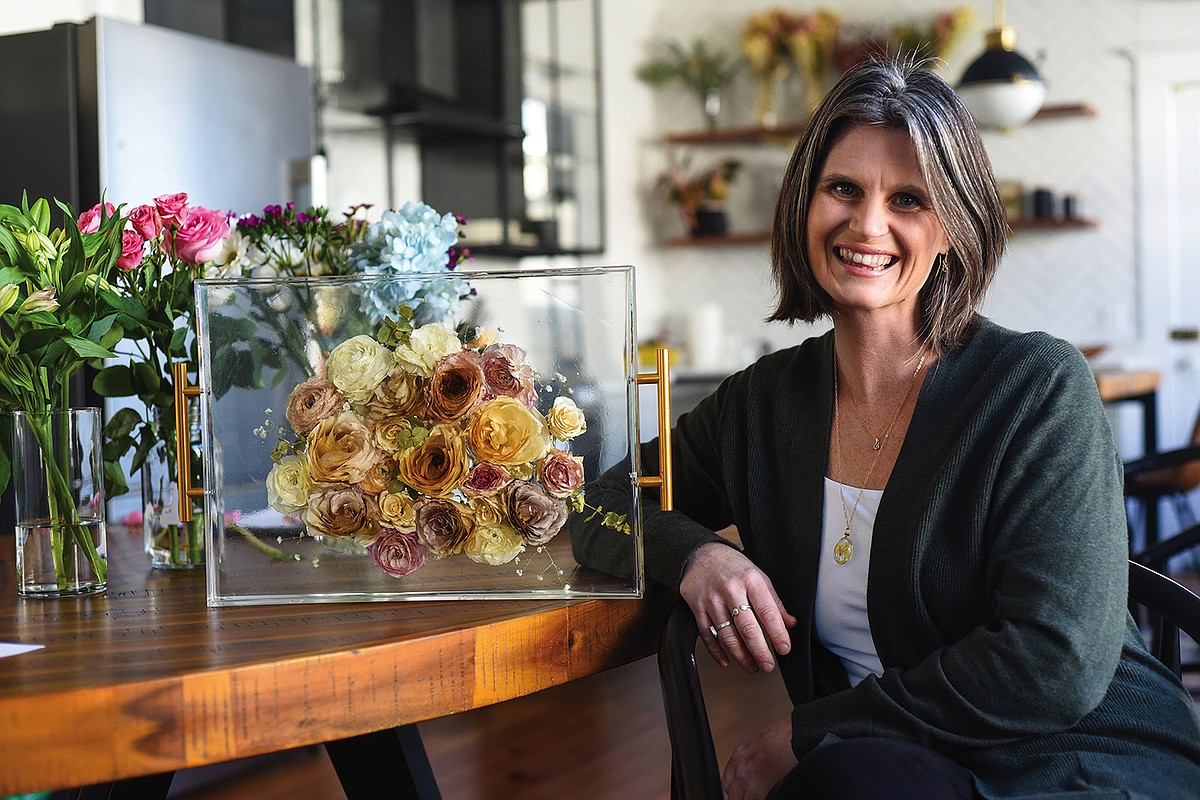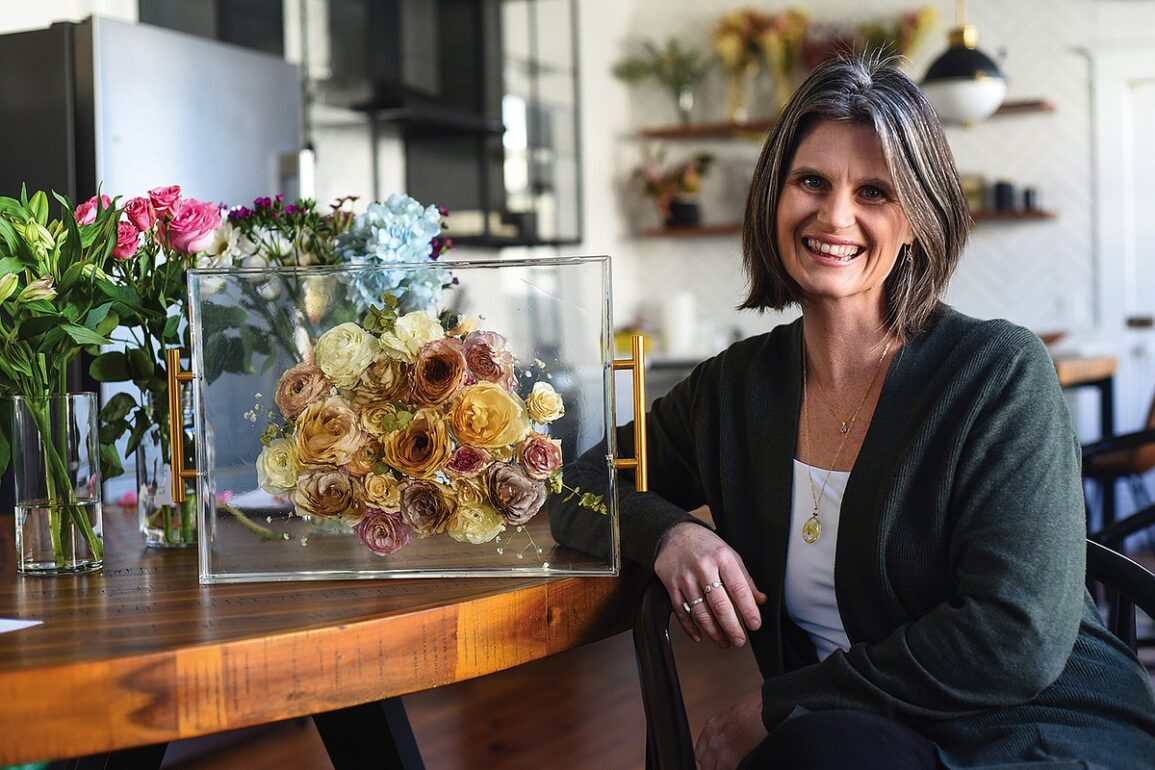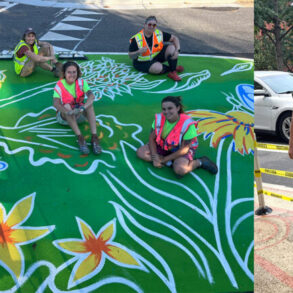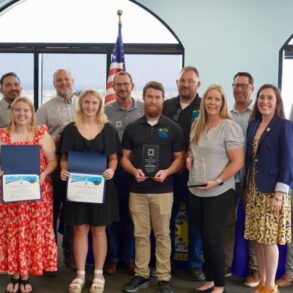
Lin Feagans loves flowers. She loves their beauty, their form, their versatility. She especially loves how flowers make people happy. She admits that she has her favorites — gerber daisies, spray roses and Queen Anne’s lace make the list — if the flower is particularly pretty or easy to work with. But Feagans says there’s no flower that she doesn’t like.
She also loves the stories that come with flowers — a bridal bouquet from someone’s dream wedding, or funeral flowers to remember an adored grandmother.
“I love the stories people share with me about their life,” she says. “They bring me the flowers, and you can feel the emotion in them. I love people who feel safe talking to me and sharing that.”
Feagans comes by her love of nature naturally. Even as a kid, she would collect ferns and flowers from the campground where her grandmother worked and press them in books, and her grandma would teach her about the plants she’d found. Later, she got her degree in outdoor education.
It was a lifelong dream of hers to work with flowers, she says. And she was finally able to put that passion for petals into practice when she started her art business, Wanderlust and Wolf, eight years ago.
Today, Feagans’ art and a good portion of her life are devoted to flowers, to preserving not only their beauty, but their emotional significance — the memory of an important person or occasion. Feagans works in or the art of flower pressing that has roots in 16th-century Japan.
Her artwork ranges from resin jewelry containing a single pressed flower to elaborate framed art pieces created with 60-80 different flowers and greenery. She is a regular at the Chattanooga Market, where she sells her various forms of floral art, but she estimates that 80% of her business is custom flower preservation work commissioned by various clients wanting a piece to honor everything from marriage to motherhood to mourning.
Feagans’ process involves pressing flowers between various layers of plastic, paper, wool and cotton. Sometimes she sticks the flowers in the microwave for about 30 seconds to flatten and dry them out, and other times she places them beneath heavy book volumes.
Once the moisture is removed from the flowers, she puts them in resin. Or she creates beautiful collages of buds and leaves to be sandwiched between two panes of glass and framed as keepsake wall art. Depending on the flower, she either presses it in its entirety, or deconstructs it down to its petals, dries it and then painstakingly recreates the form of the flower on canvas.
Another method of preservation involves silica gel. If you bury a flower in silica for the appropriate length of time, the flower emerges dry and preserved while retaining its 3D shape — almost like floral taxidermy. Feagans uses silica-preserved flowers to create large objects like bookends or platters.
But preserving flowers isn’t easy. There’s a lot more to it than simply slamming a dandelion inside an old encyclopedia — though Feagans admits that almost every book you see on her shelves does indeed have some form of plant life hidden in its pages. But flowers become brittle; they fall apart; they change colors — and sometimes not-so-pretty ones. And if not properly preserved, flowers can even mold.
“It’s just the journey of the flower,” she says, chalking up the bruises and blemishes flowers inevitably get to a lot of manhandling and manipulation before they arrive in her hands. “When I’m working with bridal bouquets, most of the time, the flowers have gone through a pretty intense transition,” she says. “They’re going from the farm to the truck to the florist. There’s a lot of people handling these flowers.”
White flowers, in particular, tend to easily turn yellow or brown. While some clients appreciate that vintage look, others want their white flowers to stay white. Feagans can accommodate both preferences.
In order to fix up a gloomy bloom, she sometimes uses color-correction techniques. Normally, this involves using a powder-based paint, which she compares to eye shadow. “It’s like putting makeup on flowers,” she says.
Feagans is conscientious about repurposing excess flowers from her art for other pieces or to make dried bouquets. “There are millions and millions of pounds of flowers in landfills every single year from brides, events, etc.,” she says. “And if I can reduce the flower waste, then that’s what I’ll do.”
She also wants to use her art to educate people about plants so they’ll be more inclined to protect them. And mostly, she just loves bringing flowers back to life.
“The flowers live on through art,” she says. “I think each piece speaks to us in its own way. I let the flowers do the talking.”
See Feagans’ work at wanderlustandwolf.com or on Facebook or Instagram.
This post was originally published on this site be sure to check out more of their content








